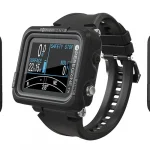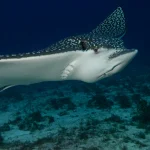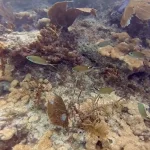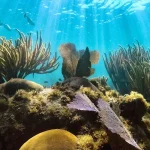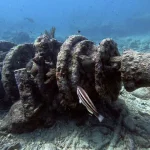Table of Contents
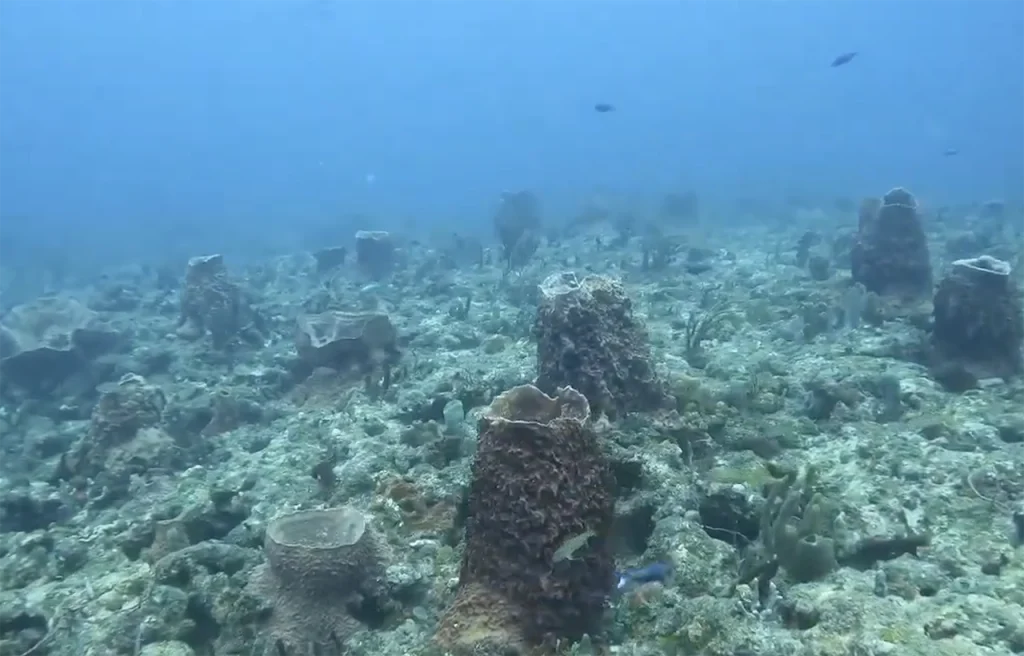
Lost Ledge is part of the third largest barrier reef system in the world, offering divers the opportunity to explore diverse marine life and coral formations.
Article at a Glance
- Location: Lost Ledge is situated in Pompano Beach, Florida, part of the third largest barrier reef system in the world.
- Depth: The dive site features depths ranging from 45 to 65 feet, with some areas dropping to 80-100 feet, making it suitable for both beginners and advanced divers.
- Visibility: Divers can expect visibility between 30 to 60 feet, with optimal conditions typically found during the summer months.
- Marine Life: The site is home to diverse marine species, including Caribbean spiny lobsters, nurse sharks, moray eels, and a variety of colorful reef fish.
- Best Time to Dive: The ideal time for diving is from July to August for visibility and conditions, with the lobster season running from August 6 to March 31 attracting many divers.
- Photography Opportunities: Lost Ledge offers excellent opportunities for underwater photography due to its vibrant coral formations and abundant marine life.
- Navigational Challenges: The extensive ledges and rock formations provide an engaging experience for divers, making navigation an exciting aspect of exploring this underwater environment.
Lost Ledge Pompano Beach
Lost Ledge is a popular dive site located in Pompano Beach, Florida. It is part of the outer reef system, running parallel to the shoreline just south of Hillsboro Inlet1. The site features a series of east and west facing ledges with rock mounds, making it an extensive reef area.
Lost Ledge is known for:
- Being navigationally challenging, hence its name
- Offering excellent opportunities for lobster diving, especially on rough days
- Having a maximum depth of around 65 feet
For diving Lost Ledge:
- It’s suitable for Open Water certified divers and above
- Boats typically depart from Pompano Beach
- The reef’s profile is about 45 feet on top, dropping to 60-65 feet on the west-facing side
When diving with a north current, you can start anywhere towards the south end. For a south current, it’s best to begin at the north hook. Due to the wide outer reef, using a zig-zag pattern along with the current is advantageous.
What Marine Life Can I Expect To See?
- Fish Species:
- Blue-striped grunts
- Grey snappers
- Angelfish
- Parrotfish
- Butterflyfish
- Barracuda
- Unique Sightings:
- Spotted Drum hiding under rocky ledges2
- Schools of reef fish inhabiting the area
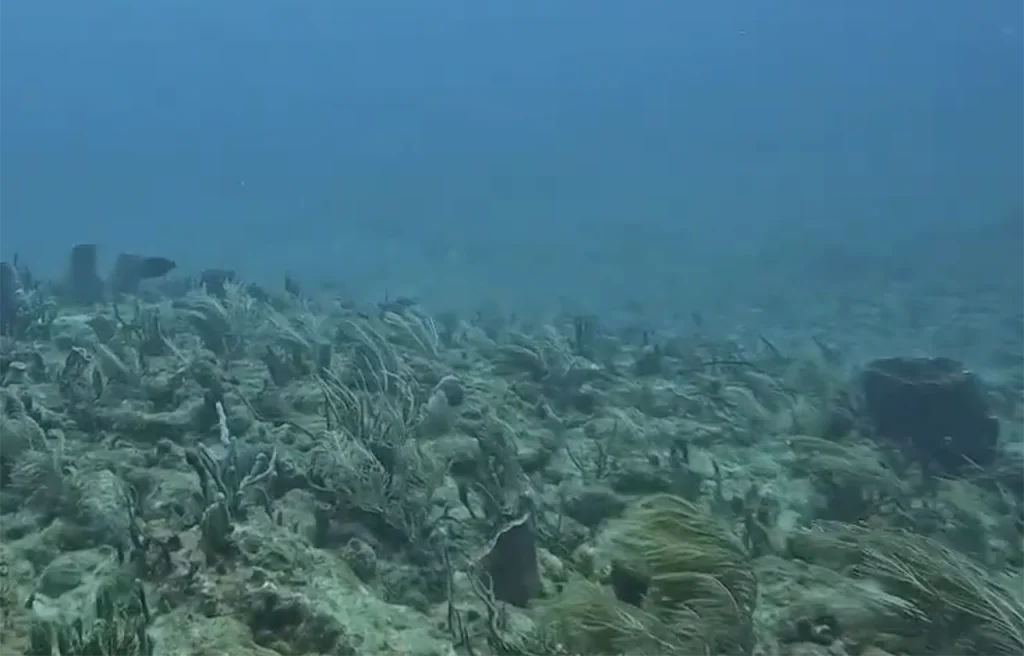
What Do Divers Say About This Site?
- Diverse Marine Life: Many divers appreciate the rich biodiversity at Lost Ledge, noting encounters with various fish species such as blue-striped grunts, angelfish, and barracuda. The vibrant coral formations and sponges add to the underwater scenery, making it a visually rewarding dive site.
- Good Conditions: Reviews often mention favorable diving conditions, including clear visibility that can reach up to 50 feet. Divers have noted that the site is particularly enjoyable on calm days, which enhances the overall experience.
- Navigational Challenges: Some divers point out that navigating the site can be tricky due to its extensive ledges and rock mounds. However, this complexity is part of what makes diving at Lost Ledge exciting, as it encourages exploration and discovery.
- Friendly and Professional Crew: Dive operators in the area receive high praise for their professionalism and attentiveness. Many divers report having positive interactions with crew members who provide thorough briefings and assistance, especially for novice divers.
- Lobster Diving: Lost Ledge is particularly popular among lobster divers, especially on rougher days when other sites may be less accessible. This aspect attracts both experienced and novice divers looking to catch lobsters.
Key Information
| Key Information | Details |
|---|---|
| Location | Pompano Beach, Florida |
| Type of Dive Site | Reef dive |
| Max Depth | 65 feet (with some areas dropping to 80-100 feet) |
| Visibility | 30 to 60 feet |
| Best Time to Dive | July to August (optimal visibility and conditions); Lobster season: August 6 – March 31 |
| Suitability | Open Water certified divers and above |
| Marine Life | Lobsters, nurse sharks, moray eels, various reef fish |
| Unique Features | Extensive ledges, rock mounds, navigational challenges |
| Photography Opportunities | Excellent for underwater photography due to vibrant marine life and coral formations |
| Recommended Dive Practices | Early morning or late afternoon dives; slack tide for calmer conditions |
Highlights of Diving This Site?
- Diverse Marine Life: The site is known for its rich biodiversity, including Caribbean spiny lobsters, nurse sharks, moray eels, and a variety of tropical fish. This abundance of marine species enhances the underwater experience and provides excellent opportunities for photography and observation.
- Vibrant Coral Reefs: Lost Ledge is part of the Florida reef tract, which hosts over 6,000 marine species. Divers can explore colorful coral formations, including hard and soft corals, sponges, and gorgonians, creating a visually stunning environment.
- Navigational Challenge: The reef features a series of east and west-facing ledges with rock mounds, making navigation an engaging challenge. Many divers find this aspect exciting as it encourages exploration and discovery.
- Accessible Depths: The site typically ranges from 30 to 65 feet deep, making it suitable for both novice and experienced divers. This accessibility allows a wide range of divers to enjoy the underwater scenery without requiring advanced technical skills.
- Excellent Visibility: Divers often praise the visibility at Lost Ledge, which can range from 30 to 60 feet. Clear waters enable divers to fully appreciate the vibrant marine ecosystem and capture stunning underwater photographs.
- Lobstering Opportunities: Particularly popular among lobster divers, Lost Ledge offers great opportunities for lobstering during the season. The numerous crevices and overhangs provide ideal hiding spots for lobsters, making it a rewarding experience for those interested in hunting.
- Nearby Dive Sites: Its proximity to other popular dive sites in Pompano Beach allows divers to easily explore additional locations such as Steve’s Twin Ledges and Barracuda Reef, each offering unique underwater experiences.
My Favorite Dive Computers
I have compared the 3 top diving computers for each category to help making the right choice easier:
Iconic Spots At This Site
- The Ledges: The primary attraction of Lost Ledge is its series of east and west-facing ledges interspersed with rock mounds. These geological formations create a diverse habitat for marine life and provide various nooks and crannies for exploration.
- Lobster Hiding Spots: Known for its abundance of Caribbean spiny lobsters, Lost Ledge offers numerous hiding spots among the ledges and overhangs. This makes it a prime location for lobster divers, especially during the lobster season.
- Coral Formations: The site is part of the Florida reef tract, which boasts vibrant coral reefs. Divers can explore a variety of coral types, including hard and soft corals, contributing to the stunning underwater scenery.
- Marine Life Hotspots: Specific areas within Lost Ledge are known for frequent sightings of diverse marine species, including nurse sharks, moray eels, and colorful tropical fish. These hotspots enhance the diving experience by providing opportunities for photography and observation.
- Navigational Challenges: The extensive layout of the reef can be navigationally challenging, which adds an element of adventure to the dive. Divers often enjoy using a zig-zag pattern to explore the area effectively.
- Nearby Dive Sites: Lost Ledge is conveniently located near other popular dive sites such as Steve’s Twin Ledges and Pompano Dropoff, allowing divers to easily extend their underwater exploration.
Environmental Conservation Efforts at Lost Ledge
Marine Protected Areas (MPAs) play a crucial role in preserving underwater ecosystems. Lost Ledge, being part of the Florida reef tract, likely benefits from some level of protection. MPAs help conserve marine biodiversity, protect habitats, and support sustainable fisheries.
Key conservation efforts that may be relevant to Lost Ledge include:
- Restrictions on fishing methods: Banning destructive practices like bottom trawling helps protect the seabed and associated species.
- Monitoring marine life: Regular surveys of fish populations, coral health, and overall biodiversity can inform conservation strategies.
- Limiting pollution: Efforts to reduce chemical and plastic pollution in the area can help maintain the health of the reef ecosystem.
- Sustainable tourism practices: Educating divers about responsible behavior and implementing guidelines to minimize impact on the reef.
- Research and data collection: Ongoing scientific studies to understand the ecosystem’s health and changes over time.
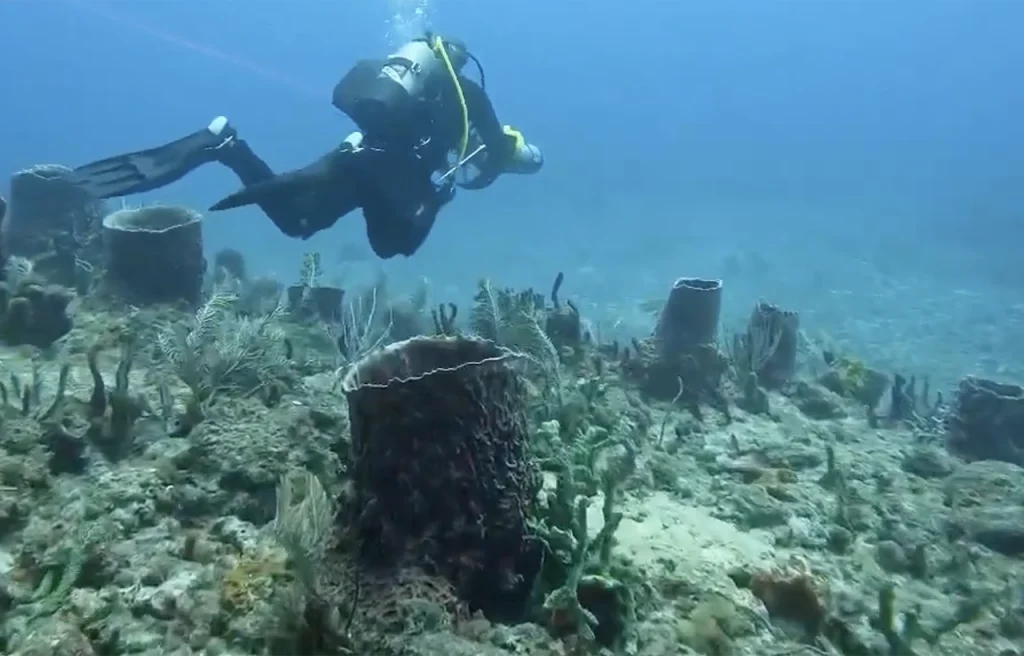
Capturing Memories at Lost Ledge: Photography Tips
Choose the Right Equipment
- Camera: Use a waterproof camera or a housing for your DSLR or mirrorless camera to protect it from water damage. Opt for a camera with good low-light performance since visibility can vary underwater.
- Lighting: An external strobe or video light is crucial for illuminating subjects and capturing vibrant colors. Natural light diminishes quickly at greater depths, making additional lighting important.
Get Close to Your Subjects
- Macro Photography: For detailed shots of small marine life like nudibranchs or lobsters, get as close as possible while maintaining focus. This reduces the amount of water between you and your subject, enhancing clarity and color.
- Wide-Angle Shots: When photographing larger scenes or schools of fish, fill the frame with your subject to create immersive images.
Master Your Composition
- Rule of Thirds: Use the rule of thirds to create balanced compositions by positioning key elements along grid lines or intersections.
- Background Considerations: Pay attention to backgrounds; a clean, contrasting background can help your subject stand out. Position subjects against colorful corals or clear blue water when possible.
Plan Your Shots
- Previsualize: Before diving, think about the types of shots you want to capture. Research common marine life at Lost Ledge to prepare for what you might encounter.
- Behavior Observation: Spend time observing marine life behavior before shooting. Capturing moments like lobsters emerging from hiding spots can lead to dynamic photos.
Practice Good Buoyancy Control
Maintaining good buoyancy is essential for stable shots. Practice controlling your buoyancy so you can hover effortlessly while framing your shots without disturbing the marine environment.
Be Mindful of Marine Life
Respect the underwater ecosystem by avoiding contact with coral and other sensitive habitats. Approach marine creatures slowly to avoid startling them, ensuring natural behavior during your shoot.
Post-Dive Editing
After your dive, use photo editing software to enhance colors and correct exposure issues that may arise from underwater photography. Adjusting contrast and saturation can bring out the vivid colors typical of marine environments.
Frequently Asked Questions
When is the best time to dive Lost Ledge?
The best time to dive at Lost Ledge in Pompano Beach is influenced by several factors, including seasonal conditions and marine life activity.
Optimal Diving Season
Lobster Season: The lobster season, which runs from August 6 to March 31, is particularly popular for divers interested in lobstering. This period aligns with the peak activity of Caribbean spiny lobsters, making them more accessible and abundant during dives.
Weather and Visibility
Summer Months: The optimal conditions for diving, characterized by clear, calm, and warm water, are typically found in July and August. During these months, visibility can improve significantly, often ranging from 30 to 60 feet, enhancing the overall diving experience.
Early Morning or Late Afternoon: Many divers recommend planning dives during early morning or late afternoon when marine life is more active. Night dives can also be advantageous for spotting lobsters as they venture out of their hiding spots.
Tide Considerations
Slack Tide: Diving during slack tide (the period between incoming and outgoing tides) is recommended for calmer waters. This timing reduces current strength and enhances safety and visibility during the dive.
Avoiding Poor Conditions
Weather Impact: Heavy rains or storms can temporarily reduce visibility due to runoff and sediment disturbance. It’s advisable to check local weather forecasts before planning your dive to ensure optimal conditions.
What is the visibility like while diving Lost Ledge?
Visibility while diving at Lost Ledge typically ranges from 30 to 60 feet. This clarity allows divers to fully appreciate the vibrant marine life and coral formations in the area. The best visibility conditions are often found during the summer months, particularly from June to August, when calm weather prevails and water clarity improves significantly.
However, visibility can be affected by various factors, including weather conditions and recent rainfall, which may introduce sediment into the water. Heavy rains can temporarily reduce visibility, so checking local forecasts before diving is advisable12. Overall, divers generally report good visibility at Lost Ledge, making it a favorable site for underwater photography and exploration.
How deep are the dives at Lost Ledge?
At Lost Ledge, the dive depths vary across different sections of the reef:
Depth Ranges:Top of the reef: 45 to 55 feet
West-facing side: Drops to 60-65 feet
East-facing side: Drops to 80-100 feet
The maximum depth for most dives is around 65 feet, making it suitable for Open Water certified divers. The reef system has a varied profile with multiple depth levels, allowing divers to explore different sections of the underwater landscape.
Diving Considerations:Minimum certification level: Open Water
Depth variation allows for different diving experiences
Some areas require more advanced diving skills, especially on the deeper east-facing side
Is Lost Ledge suitable for beginners?
Lost Ledge is suitable for beginner divers, particularly those who are Open Water certified.
Maximum Depth: The site has a maximum depth of around 65 feet, which is within the range that Open Water divers are trained to handle. This depth allows beginners to gain valuable experience without venturing into more challenging environments.
Shallow Areas: The top of the reef typically ranges from 45 to 55 feet, providing shallower sections that are ideal for less experienced divers to explore comfortably while still enjoying the vibrant marine life and coral formations.
Navigation: While Lost Ledge can be navigationally challenging due to its extensive ledges and rock mounds, guided dives are often available, which can help beginners navigate the site safely. Familiarity with basic navigation skills is beneficial, but many dive operators provide assistance.
Marine Life: The abundance of marine life, including lobsters and various fish species, makes diving at Lost Ledge an exciting experience for beginners, enhancing their enjoyment and engagement underwater.
Is Lost Ledge suitable for advanced divers?
Lost Ledge is indeed suitable for advanced divers, offering several features that cater to their skills and interests:
Depth Variability: The site has a maximum depth of around 65 feet, with sections dropping to 80-100 feet on the east-facing side. This range allows advanced divers to explore deeper areas while still providing shallower sections for less experienced divers.
Navigational Challenges: The extensive layout of ledges and rock formations can be navigationally challenging, which adds an element of adventure for experienced divers. Advanced divers often enjoy the opportunity to navigate complex underwater environments, enhancing their skills.
Diverse Marine Life: Advanced divers can appreciate the rich biodiversity at Lost Ledge, including opportunities for spotting larger marine species like nurse sharks and various types of reef fish. The presence of lobsters also attracts those interested in hunting.
Drift Diving Opportunities: Lost Ledge is suitable for drift diving, which can be particularly appealing for advanced divers looking for a more dynamic diving experience. The currents can vary, providing a different challenge and excitement during dives.
Photography and Exploration: With its vibrant coral reefs and diverse marine life, Lost Ledge offers excellent opportunities for underwater photography and exploration, appealing to advanced divers looking to capture stunning images.
Pompano Beach Dive Sites
- Pompano Trench
- Lost Ledge
- Suzzane’s Ledge
- Pompano 3rd Reef Ridge
- Steve’s Twin Ledges
- Shark Reef
- Touchdown Reef
- Pompano Drop Off
- Grouper Bend
- Nursery
- Crab Cove
- Sea Ranch
- Hillsboro Ledge
- Lighthouse Ledge
- Mark’s Ledge
- Moray Bend
- Nolan’s Ledge
- Separated Rocks (Deerfield)
- The Horseshoe
- Abbey Too
- San Remo
- Shark Ledge
- Spotfin Reef

